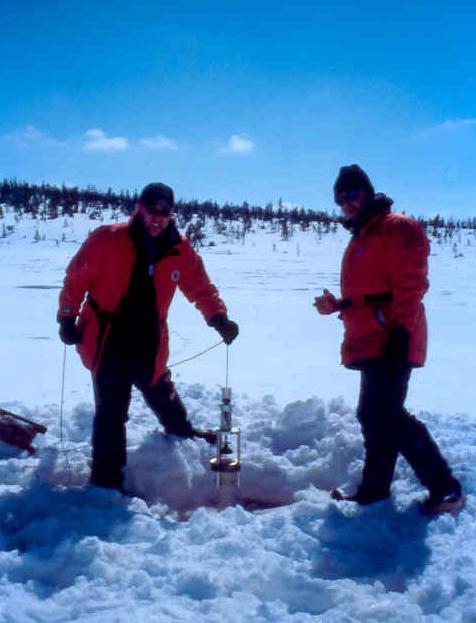
Coring Glasgow Lake, Cape Breton Highlands National Park, March 2004.
Left to Right: Brian Ginn, Mike Rate. (Photo: Brian Ginn)
Almost our entire budget is dedicated to the training of graduate students. Over the 5-year period Dr. Smol and Dr. Cumming co-supervised students with these focusing on paleolimnology components at the PEARL Lab at Queen's University in Kingston. Dr. Dillon, based at Trent University, was the primary supervisor for students in modeling and process based studies. Due to the interactive nature of this research, there was close association between all students and the Principal Investigators.
Given the multidisciplinary nature of this program, students received training in many skills that are highly sought after in government, private, and university institutions. These skills range from field and lab techniques, taxonomic expertise in important biomonitors, analytical chemistry, statistical design and analysis, modeling assessments, image analysis software, database management, presentation and writing and communication skills. Based on the strong foundation of past collaborative work, there will be very close interaction between the Trent and Queen’s (which are in close proximity to each other, have a long tradition of co-supervising students, and have had a formal arrangement for joint graduate programs). We will have formal meetings of both university groups at an annual workshop at either institute to summarize progress and problems, as well as to plan field seasons etc. This is in addition to the user sector workshops in the Maritimes.
The students also had the advantage of receiving additional training from our government and other users. Our partners worked closely with students involved in specific aspects of their projects (e.g., Environment Canada is helping with LRTAP studies, NS Dept. of Fisheries works closely with the graduate students involved in the brook trout hypolimnion project, and National Park colleagues provide students with guidance on park priorities and management issues.